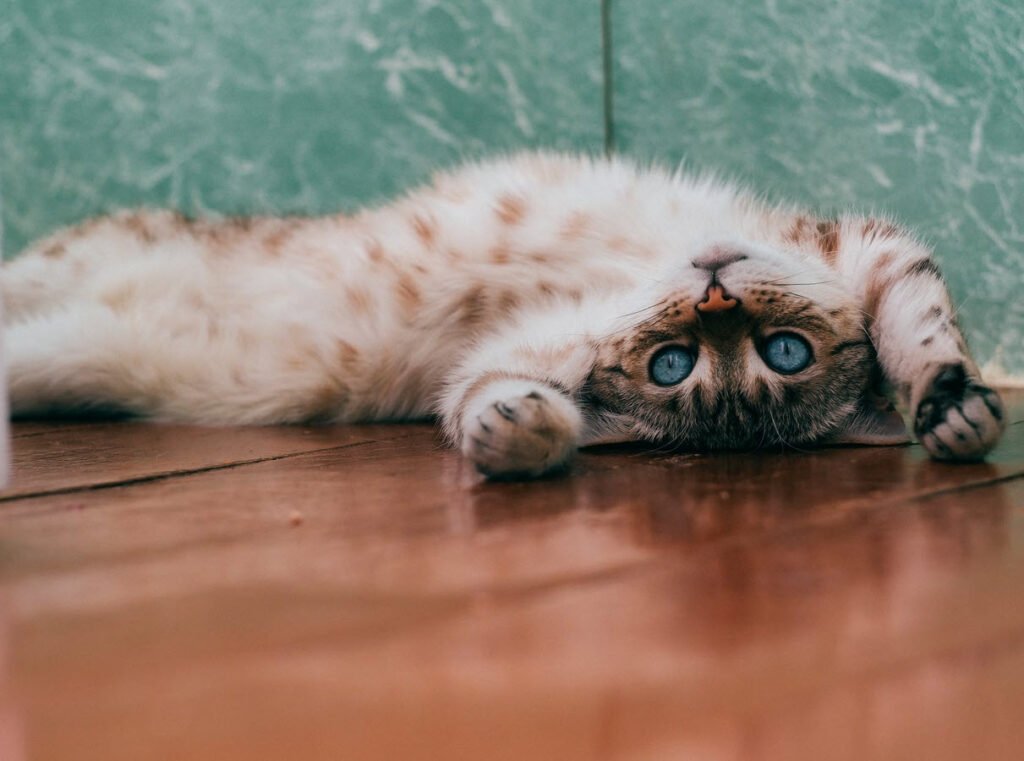
Cats are popular domestic pets known for their playful and independent nature. They are part of the Felidae family and come in many different breeds, including Siamese, Persian, and Bengal. Cats have excellent hunting skills and are known for their agility and speed.
They are also very clean animals, spending a lot of time grooming themselves. Cats are social animals, but they can also be solitary creatures. They communicate using body language, vocalizations, and scent marking. Many people enjoy the companionship of cats and consider them to be loyal and loving pets.
Cats are known for their unique personalities and independent nature, but did you know that they also communicate using their body language? By observing a cat’s movements and behaviors, you can gain insight into their emotional state and better understand their needs and desires.
- Purring = Happy
- Rolling On Back = Trust
- Headbutt = Affection
- Puffed Up Tail = Annoyed
- Arched Back = Angry
- Brings Dead Animals = Gift
- Biting = Affection
- Biting And Scratching = Annoyed
- Nowwhere To Be Seen = Practicing Ninja Moves
- Tail Wagging = Happy
- Floating = Possessed
1. Purring = Happy
One of the most well-known cat behaviors is purring, which is often associated with contentment and happiness. While cats may also purr when they are in pain or anxious, a soft and steady purr usually means that they are feeling relaxed and at ease.
2. Rolling On Back = Trust
When a cat rolls onto their back and exposes their belly, it is a sign of trust and vulnerability. This behavior shows that the cat feels comfortable and safe in their environment and is willing to let their guard down around their human or animal companions.
3. Headbutt = Affection
A cat headbutt, also known as a “bunt,” is a gentle nudge with their forehead or cheek. This behavior is a sign of affection and is often used as a greeting between cats or as a way for cats to show their humans that they love them.
4. Puffed Up Tail = Annoyed
If a cat’s tail is puffed up and appears larger than usual, it can be a sign that they are feeling annoyed, threatened, or scared. This behavior is often seen in cats who are in unfamiliar situations or who feel uncomfortable around other animals or people.
5. Arched Back = Angry
An arched back is a common sign of anger or aggression in cats. This behavior is often accompanied by hissing or growling and is a way for cats to make themselves appear larger and more intimidating to potential threats.
6. Brings Dead Animals = Gift
While it may seem gross or unsettling to some humans, bringing dead animals to their humans is a common behavior among cats. This behavior is a sign of trust and affection and is a way for cats to share their prey with their beloved companions.
7. Biting = Affection
While it may seem counterintuitive, biting can actually be a sign of affection in cats. When a cat nips or nibbles on their human’s hand or other body part, it is often a playful gesture or a way for the cat to show their affection.
8. Biting And Scratching = Annoyed
On the other hand, biting and scratching can also be a sign that a cat is feeling annoyed, angry, or threatened. This behavior is often seen when a cat is overstimulated or feels that their personal space is being invaded.
9. Nowhere To Be Seen = Practicing Ninja Moves
If your cat suddenly disappears and seems to be hiding, it may be a sign that they are practicing their ninja moves! Cats are natural hunters and love to play games of hide-and-seek, so if your cat is nowhere to be seen, they may be lurking in the shadows and waiting to pounce.
10. Tail Wagging = Happy
Similar to dogs, a wagging tail can be a sign that a cat is feeling happy and excited. However, it is important to pay attention to the position of the tail, as a rapidly twitching tail can also be a sign of irritation or agitation.
11. Floating = Possessed
While it is not a common behavior, some cats may appear to be “floating” or levitating off the ground. This behavior is often seen in cats who are experiencing a strong emotional reaction, such as fear or excitement, and is usually nothing to be concerned about.
In conclusion, by understanding the body language of cats, we can better communicate with our feline friends and ensure that they are happy, healthy, and well-cared for. It is important to note that each cat is unique, and their body language may vary based on their individual personality and experiences. By spending time observing and interacting with your cat, you can learn to recognize their unique behaviors and respond appropriately to their needs.
Additionally, it is important to approach cats with respect and understanding. Cats are sensitive animals who can become easily stressed or anxious in unfamiliar or overwhelming situations. By taking the time to understand their body language and respond appropriately, we can build stronger bonds with our feline companions and create a happy and harmonious home environment.
In summary, the language of cats is a fascinating and complex topic. From purring to biting, each behavior provides insight into a cat’s emotional state and can help us better understand their needs and desires. By paying attention to our cats’ body language and responding appropriately, we can build strong and meaningful relationships with our feline companions.
You may also read:
- Top 10 Essential Tips For Comfortable Traveling During Pregnancy
- Top 10 Tips When Buying a Used Car Privately in the UK
- 10 Unique Las Vegas Wedding Ideas for an Unforgettable Ceremony
- 25 Essential Beauty Tips You Need To Know
- The 7 Best TED Talks You Need To Know
- Elon Musk Set to Become World’s First Trillionaire by 2027: Report
- The Top 10 Worst Investment Mistakes Since 1876
- Sam Altman’s Advice to College Students and Ambitious 19-Year-Olds
- Top 10 Service Business That Makes You at Least $10K/Month
- Top 10 Websites That You Probably Didn’t Even Know About








